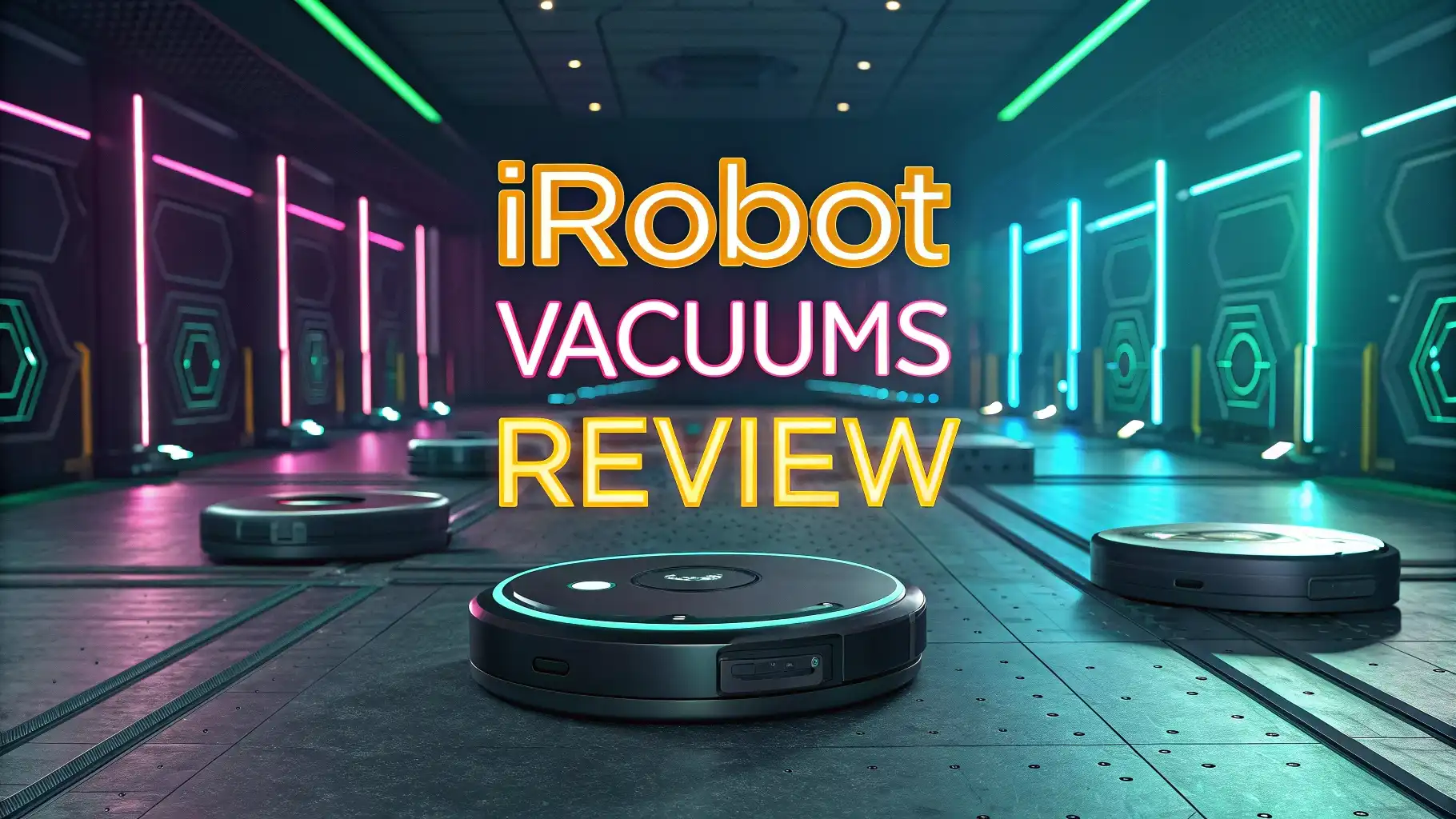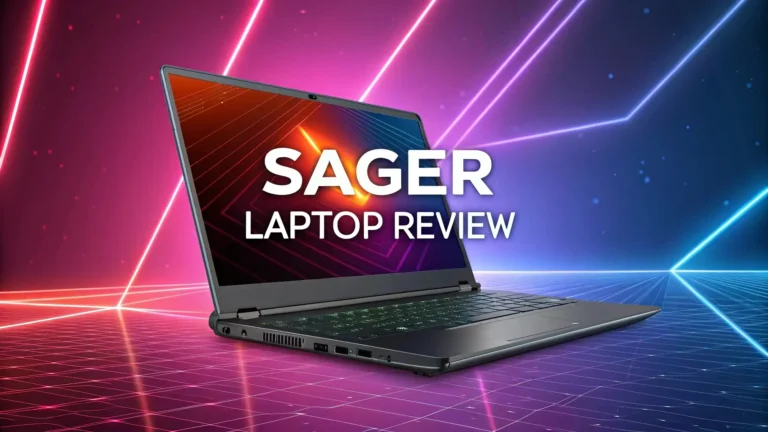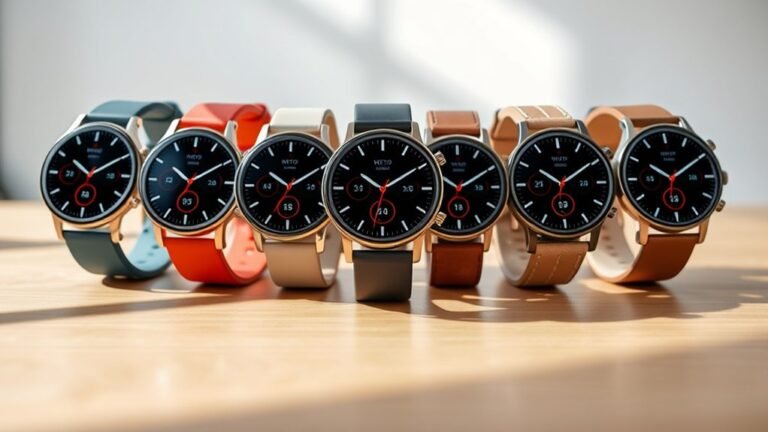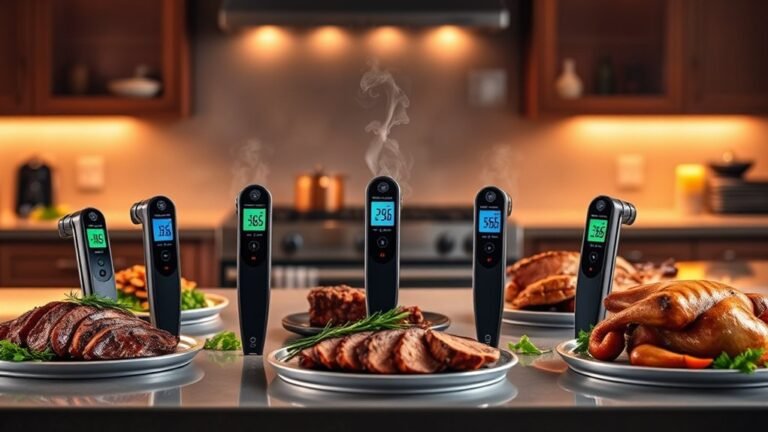iRobot Vacuums Review 2025: Smart Cleaning Made Simple
Robot vacuums have changed how we keep our homes clean. iRobot leads this change with their Roomba line. These smart machines offer hands-free cleaning that fits busy lifestyles. In 2025, iRobot brings new features and better performance to their robot vacuum lineup.
iRobot’s 2025 models come with major upgrades. The company added LiDAR navigation to more models. This technology helps robots map your home better. Self-emptying features now last longer. Some models empty themselves for up to 75 days. Smart mapping has improved too. Your robot learns your home layout and cleans more efficiently.
Price ranges vary widely in 2025. Entry-level models start around $200. Premium models with all features cost over $1,000. This range means there’s an iRobot vacuum for most budgets. The key is finding the right balance of features and price for your needs.
Pet owners will find better solutions in 2025. iRobot improved pet hair pickup. New brush designs reduce tangling. Smart obstacle avoidance helps robots navigate around pet messes. These features make robot vacuums more practical for homes with furry friends.
Key Takeaways
- New LiDAR Technology: Most 2025 iRobot models include LiDAR navigation for better mapping and obstacle avoidance
- Extended Self-Emptying: Latest models can empty themselves for 60-75 days, reducing maintenance significantly
- 70x More Suction: 2025 models advertise 70x the suction power compared to older Roomba 600 series
- Better Pet Hair Handling: Improved brush designs and stronger suction make these vacuums ideal for pet owners
- Wide Price Range: Options from budget-friendly $200 models to premium $1,000+ units with advanced features
- Smart Home Integration: Enhanced compatibility with Alexa, Google Home, and mobile app controls for convenient operation
iRobot Roomba j9+ The Premium Pick
The Roomba j9+ represents iRobot’s flagship vacuum for 2025. This model combines powerful suction with smart obstacle avoidance. It uses PrecisionVision technology to identify and avoid common household objects. Pet waste, shoes, and cables won’t stop this robot from cleaning.
- OUR BEST PICKUP PERFORMANCE. The super-powered Roomba j9+ effortlessly banishes dirt from carpet and hard floors with 100% stronger suction* so you can focus...
- FIRST-OF-ITS-KIND DIRT DETECTIVE INTELLIGENCE. Dirt Detective learns from cleaning history so your robot can automatically prioritize rooms, adjust suction, and...
- IT DOESN’T JUST LEARN YOUR HOME; IT REACTS TO IT IN REAL TIME. With PrecisionVision Navigation and a camera, your robot identifies and avoids obstacles of all...
Suction power reaches impressive levels on the j9+. The vacuum uses a three-stage cleaning system. This includes dual multi-surface rubber brushes. These brushes work on both carpet and hard floors. The brushes adjust automatically to different floor types.
Self-emptying happens automatically for up to 60 days. The Clean Base dock holds debris without your attention. When the robot finishes cleaning, it returns to the dock. The dock empties the robot’s bin and charges the battery. This means two months of hands-free cleaning.
Smart mapping creates detailed floor plans of your home. The j9+ learns your layout over multiple cleaning cycles. You can name rooms and create cleaning schedules. The robot cleans specific rooms on command. Voice control works with Alexa and Google Assistant.
Pet owners benefit from special features. The vacuum identifies pet waste and avoids it. This prevents the messy accidents that happen with basic robot vacuums. Strong suction removes pet hair from carpets and furniture. The HEPA filter traps allergens and dander.
Roomba Combo j9+ Vacuum and Mop Combined
The Combo j9+ adds mopping to the j9+ vacuum features. This two-in-one machine vacuums and mops in single cleaning cycles. Mopping technology includes a retractable mop pad. The pad lifts automatically when the robot moves to carpet.
- FOR DIRT AND DUST PICKUP. This cutting-edge robot vacuum and mop effortlessly banishes dirt from carpet and hard floors. Three levels of suction power and...
- POWERFUL VACUUMING MEETS DEEP CLEAN MOPPING. Hard-working and intelligent, this 2-in-1 customizes your deep clean with up to 100% stronger suction* and is the...
- READY FOR HANDS-FREE CLEANING The Clean Base Auto-Fill Dock powers and primes your robot by emptying debris for 60 days and refilling water or solution for 30...
Water management happens automatically. The robot adds water to the mop pad as needed. Clean water comes from a tank in the base station. Used water gets stored separately. This auto-fill system means less maintenance for you.
Cleaning performance excels on multiple floor types. The vacuum mode handles carpets and rugs. Mopping works on tile, hardwood, and laminate. SmartScrub technology provides back-and-forth mopping motion. This removes stuck-on dirt better than simple wiping.
Base station features expand beyond basic self-emptying. The dock refills the water tank automatically. It also empties dirty water after cleaning. Mop pad cleaning happens at the base too. Hot air drying prevents mold and odors on the pads.
Scheduling lets you customize vacuum and mop cycles. Set different schedules for different rooms. The robot can vacuum daily and mop weekly. Smart sensors detect floor types and adjust cleaning methods automatically.
Roomba Plus 505 Combo Advanced Cleaning Station
The Plus 505 Combo brings premium features to a mid-range price point. This model includes extending spinning mop pads. These pads reach into corners and along edges better than fixed pads. LiDAR navigation provides precise mapping and efficient cleaning paths.
- DEEP DOWN AND WALL-TO-WALL. Advanced DualClean Mop Pads with PerfectEdge extend floor-mopping coverage by 18%* and SmartScrub adds 2x deeper scrubbing** to wipe...
- STRONG SUCTION SERIOUS MOPPING. Devours messes from crumbs to pawprints with 70x more suction*, DualClean Mop Pads with PerfectEdge, SmartScrub, a multi-surface...
- CLEARVIEW PRO LIDAR. Expertly maps your home to maximize coverage and clean thoroughly, day or night- Plus, specialized sensors ensure Roomba robot won't take a...
AutoWash Dock handles multiple maintenance tasks. It empties the vacuum bin automatically. The dock washes mop pads with clean water. Heated drying prevents mold growth on wet pads. Self-cleaning cycles keep the dock hygienic.
Obstacle recognition helps the robot navigate around furniture and objects. The system identifies chairs, tables, and other common items. Smart mapping creates detailed floor plans you can customize. Set no-go zones and cleaning preferences for each room.
Cleaning performance adapts to different surfaces. The vacuum increases suction on carpets automatically. Mopping pressure adjusts based on floor type. Edge cleaning reaches into corners where dirt accumulates.
App control provides detailed cleaning reports. See which areas were cleaned and how long it took. Voice commands work through smart speakers. Schedule cleanings and check status without opening the app.
Roomba Plus 405 Combo Budget-Friendly Option
The Plus 405 Combo offers essential features at a lower price. This model includes spinning mop pads and self-emptying capability. LiDAR navigation ensures efficient cleaning paths. Pad-lift technology protects carpets during mopping cycles.
- STRONG SUCTION SERIOUS MOPPING. Devours messes from crumbs to pawprints with 70x more suction*, DualClean Mop Pads, SmartScrub, a multi-surface rubber brush,...
- DOUBLES DOWN ON MOPPING. Spinning DualClean Mop Pads and SmartScrub eradicate messes with 2x deeper scrubbing* and downward pressure, Mop with cleaning...
- SUPER-SMART MAPPING AND NAVIGATION. ClearView LiDAR quickly maps your home to maximize coverage and provide a precise clean while steering smoothly around...
AutoWash Dock provides basic maintenance automation. The dock empties the vacuum bin after each cleaning. It washes mop pads with clean water. Air drying removes moisture from cleaned pads. This prevents odors and bacterial growth.
Cleaning system uses a three-stage process for vacuuming. Dual rubber brushes prevent tangling with pet hair. Power-lifting suction adjusts automatically to floor types. The system increases power on carpets and reduces it on hard floors.
Smart features include room-specific cleaning. Customizable maps let you name rooms and set preferences. Scheduling allows different cleaning times for different areas. Voice control works with major smart home systems.
Maintenance requirements stay minimal with automated features. The self-emptying dock holds debris for weeks. Filter replacement indicators tell you when service is needed. Brush cleaning happens automatically during operation.
Roomba 105 Vac Entry-Level Excellence
The Roomba 105 Vac brings premium features to budget-conscious buyers. This model includes LiDAR navigation at an entry-level price. Intense power-lifting suction provides deep cleaning. 75-day self-emptying reduces maintenance frequency.
- UP TO 75 DAYS HANDS-FREE CLEANING. Dirt and dust stay gone because it empties into the AutoEmpty dock with a bag that traps 99% of allergens as small as 0.7...
- DEVOURS DIRT WITH 70X MORE POWER-LIFTING SUCTION. 3-Stage Cleaning includes 70X more power-lifting suction*, a Multi-Surface brush, and Edge-Sweeping brush to...
- SUPER-SMART MAPPING AND NAVIGATION. ClearView LiDAR quickly maps your home to maximize coverage and provide a precise clean while steering smoothly around...
Navigation system uses laser technology for precise mapping. The robot creates detailed floor plans of your home. Neat row cleaning ensures complete coverage. The vacuum cleans in systematic patterns rather than random movements.
Suction power reaches professional levels despite the budget price. Multi-surface cleaning works on carpets, hardwood, and tile. The vacuum adjusts power automatically based on floor type. Edge cleaning reaches into corners and along baseboards.
Smart connectivity includes app control and voice commands. Schedule cleanings from your phone. Check cleaning status and battery level remotely. Alexa integration lets you start cleaning with voice commands.
Build quality matches more expensive models. Durable construction handles daily use. Easy maintenance includes simple filter and brush replacement. Customer support from iRobot provides help when needed.
New 2025 Features That Matter
LiDAR technology appears in most 2025 iRobot models. This laser navigation system creates precise home maps. Obstacle avoidance improves significantly with better sensors. The robots identify and navigate around furniture, cables, and pet toys.
Suction power increases dramatically in 2025 models. iRobot advertises 70x more suction than older 600-series models. This represents a major performance jump. Brush design changes reduce hair tangling. Single roller brushes replace dual brush systems in some models.
Self-emptying duration extends to 75 days in newest models. This means over two months of hands-free operation. Base station features expand beyond simple emptying. Some models include mop washing and water tank refilling.
Smart home integration improves across the lineup. Enhanced app features provide detailed cleaning reports. Voice control works better with smart speakers. Remote monitoring lets you check cleaning status from anywhere.
Battery life increases in 2025 models. Some robots clean for over three hours on single charges. Charging time decreases with improved battery technology. Runtime tracking helps you plan cleaning schedules better.
Understanding iRobot’s Model Numbers
Model naming follows specific patterns in 2025. The 100 series represents entry-level vacuums. These include basic features at lower prices. 200 series adds mid-range features. 400 and 500 series provide premium features.
Plus designation indicates self-emptying capability. Models without “Plus” require manual bin emptying. Combo models include both vacuum and mop functions. Standard models only vacuum.
Version numbers like j9+ indicate feature levels. Higher numbers generally mean more features. Letters often indicate model generations. The “j” series includes advanced obstacle avoidance.
Special editions sometimes appear with unique features. Amazon exclusive models may have different specifications. Costco versions often include extra accessories. Always check specific model features before buying.
Compatibility varies between model series. Replacement parts don’t always work across different series. App features may differ between older and newer models. Dock compatibility often requires matching series.
Pet Hair and Allergen Management
Pet hair pickup improves significantly in 2025 models. Dual rubber brushes prevent hair from tangling around rollers. Strong suction pulls hair from carpet fibers. HEPA filtration traps dander and allergens.
Brush maintenance becomes easier with new designs. Self-cleaning brushes reduce hair buildup automatically. Tool-free removal makes cleaning simple. Replacement indicators tell you when brushes need changing.
Allergen control benefits from improved filtration. Multi-stage filters capture particles as small as 0.3 microns. Sealed systems prevent dust from escaping during operation. Filter replacement schedules help maintain performance.
Pet-specific features address common challenges. Pet waste avoidance prevents messy accidents. Quiet operation doesn’t scare nervous pets. Schedule flexibility lets you clean when pets are outside.
High-traffic areas get special attention with smart mapping. Pet feeding areas can receive extra cleaning cycles. Litter box zones get customized cleaning schedules. Furniture protection prevents robots from getting stuck under low clearances.
Smart Home Integration and App Features
iRobot Home app provides comprehensive robot control. Room mapping lets you customize cleaning areas. Schedule creation allows different cleaning times for different rooms. Cleaning history tracks performance over time.
Voice control works with multiple platforms. Alexa commands start and stop cleaning cycles. Google Assistant integration provides similar functionality. Siri shortcuts work on iOS devices.
Smart notifications keep you informed about cleaning status. Completion alerts tell you when cleaning finishes. Error notifications explain problems and solutions. Maintenance reminders help you keep robots running well.
Remote monitoring lets you check robot status from anywhere. Real-time maps show current cleaning progress. Camera feeds available on some models provide visual monitoring. Security features protect your home data.
Third-party integration connects with other smart home devices. IFTTT support creates custom automation rules. SmartThings compatibility works with Samsung ecosystems. Home automation systems can trigger cleaning cycles based on other events.
Maintenance and Long-term Ownership
Regular maintenance keeps robots running efficiently. Weekly bin emptying applies to non-self-emptying models. Monthly filter changes maintain suction power. Brush cleaning removes hair and debris buildup.
Self-emptying models reduce maintenance frequency significantly. Bag replacement happens every 2-3 months. Base station cleaning requires occasional attention. Dock maintenance includes water tank cleaning for combo models.
Replacement parts availability ensures long-term usability. Filters cost $10-20 for multi-packs. Brushes range from $15-30 for replacement sets. Batteries cost $50-80 when replacement becomes necessary.
Warranty coverage varies by model and retailer. Standard warranty covers defects for one year. Extended warranties available through retailers. Customer support helps with troubleshooting and repairs.
Software updates improve performance over time. Automatic updates download through Wi-Fi connections. Feature additions sometimes appear in updates. Bug fixes address performance issues.
Price Comparison and Value Analysis
Entry-level models start around $200-300. These include basic navigation and cleaning features. Self-emptying capability adds $100-200 to base prices. Combo models cost $100-300 more than vacuum-only versions.
Mid-range options fall between $400-700. These include LiDAR navigation and smart mapping. Premium features like obstacle avoidance appear in this range. Build quality improves with higher prices.
High-end models exceed $800-1000. These include all available features. Advanced sensors and premium materials justify higher costs. Extended warranties often include with premium models.
Value proposition depends on specific needs. Large homes benefit from longer battery life and advanced navigation. Pet owners should prioritize strong suction and anti-tangle brushes. Busy families gain most from self-emptying features.
Sales and discounts frequently reduce prices. Holiday sales offer significant savings. Model year transitions clear out older inventory. Retailer competitions sometimes provide best prices.
Performance on Different Floor Types
Carpet cleaning benefits from automatic suction adjustment. Thick carpets require maximum power settings. Area rugs get gentle treatment to prevent damage. Carpet edges receive special attention with side brushes.
Hard floor performance excels with appropriate suction levels. Hardwood floors get gentle cleaning to prevent scratches. Tile surfaces handle higher suction for deep cleaning. Grout lines benefit from strong suction and precise navigation.
Mixed floor homes benefit from automatic adjustment features. Transition detection changes settings between floor types. Room-specific settings optimize performance for each area. Edge cleaning works well on all surface types.
Obstacle navigation varies by floor type. Carpet thickness affects robot height and mobility. Floor transitions can challenge some models. Furniture clearance determines accessible areas.
Cleaning patterns adapt to floor characteristics. Systematic coverage ensures complete cleaning. Multiple passes handle heavily soiled areas. Spot cleaning targets specific mess locations.
Battery Life and Charging Considerations
Battery capacity varies significantly between models. Runtime ranges from 60 minutes to over 180 minutes. Cleaning area coverage depends on home layout and carpet thickness. Power management optimizes battery usage automatically.
Charging time affects daily usability. Fast charging gets robots back to work quickly. Dock location should provide easy access and adequate space. Charge indicators show battery status clearly.
Battery degradation occurs gradually over years of use. Replacement batteries extend robot lifespan. Battery care includes avoiding complete discharge cycles. Temperature effects impact battery performance.
Cleaning cycles adapt to available battery power. Return to dock happens automatically when battery runs low. Resume cleaning continues where the robot left off after charging. Smart scheduling considers battery capacity.
Power consumption during charging varies by model. Energy efficiency saves electricity costs. Standby power remains minimal when not cleaning. Environmental impact considerations favor longer-lasting batteries.
Noise Levels and Operation Times
Noise production varies significantly between models and settings. Quiet modes reduce sound for noise-sensitive times. Maximum power creates more noise but cleans better. Decibel ratings help compare models objectively.
Operation timing affects household comfort. Night cleaning requires quieter operation. Daytime use allows maximum power settings. Schedule flexibility lets you avoid noise-sensitive periods.
Noise sources include suction motors, brushes, and movement. Rubber wheels reduce rolling noise on hard floors. Brush design affects noise levels during operation. Suction adjustment provides volume control.
Household considerations influence noise tolerance. Pet reactions vary by animal and noise sensitivity. Sleep schedules affect optimal cleaning times. Home offices may require quiet operation during work hours.
Sound quality differs between models. High-pitched whines annoy more than low rumbles. Consistent noise bothers less than varying sounds. Duration affects overall noise impact.
Common Problems and Solutions
Navigation issues sometimes occur with complex layouts. Furniture rearrangement can confuse mapped routes. Software updates often fix navigation problems. Manual guidance helps robots learn new layouts.
Cleaning performance problems have identifiable causes. Clogged filters reduce suction power significantly. Tangled brushes decrease cleaning effectiveness. Full bins prevent proper debris pickup.
Connectivity problems affect smart features. Wi-Fi interference disrupts app communication. Router placement influences connection stability. Network updates sometimes require robot reconnection.
Mechanical issues may develop over time. Wheel problems affect movement and navigation. Sensor cleaning maintains obstacle detection accuracy. Regular maintenance prevents most mechanical failures.
Software glitches occasionally affect operation. App crashes interrupt remote control. Firmware bugs may cause unexpected behavior. Factory resets solve many software problems.
Future of Robot Vacuum Technology
Artificial intelligence continues improving navigation and cleaning efficiency. Machine learning helps robots adapt to home layouts better. Predictive maintenance may alert owners to potential problems. Customization will increase with better AI understanding.
Sensor technology advances enable better obstacle detection. Camera systems provide visual navigation assistance. Multi-sensor fusion combines different detection methods. Privacy protection becomes increasingly important with cameras.
Battery technology improvements extend runtime and reduce charging time. Fast charging may enable multiple cleaning cycles daily. Wireless charging could eliminate dock connections. Battery health monitoring extends component lifespan.
Integration capabilities expand with smart home growth. IoT connectivity links robots to broader home automation. Voice control becomes more sophisticated and natural. Mobile integration provides enhanced remote capabilities.
Environmental consciousness drives efficiency improvements. Energy reduction lowers operational costs. Sustainable materials appear in construction. Recycling programs handle end-of-life disposal responsibly.
Making the Right Choice for Your Home
Home size significantly influences model selection. Large homes need extended battery life and efficient navigation. Small apartments may prioritize compact size and quiet operation. Multi-level homes benefit from mapping multiple floors.
Lifestyle factors determine feature importance. Busy schedules maximize self-emptying value. Pet ownership requires strong suction and anti-tangle features. Allergy sensitivity benefits from HEPA filtration.
Budget considerations balance features against cost. Essential features should take priority over nice-to-have additions. Long-term value includes maintenance costs and replacement parts. Financing options may make premium models accessible.
Technical comfort affects feature utilization. App complexity varies between models. Setup requirements range from simple to technical. Troubleshooting skills influence maintenance success.
Future needs should influence current decisions. Home changes may require different features later. Technology updates extend robot capabilities over time. Upgrade paths within brand ecosystems provide continuity.
Frequently Asked Questions
How often should I empty my Roomba’s bin?
Self-emptying models handle bin emptying automatically for 60-75 days. Standard models need emptying after each cleaning cycle or when the bin fills. Pet owners may need more frequent emptying due to hair volume. Large homes generate more debris requiring frequent attention.
Can iRobot vacuums clean multiple floors?
Smart mapping technology allows robots to map and clean multiple floor levels. Manual transport between floors is required. Separate maps store layout information for each level. Charging dock should be available on the primary cleaning floor.
What maintenance do robot vacuums require?
Regular maintenance includes filter replacement every 2-3 months. Brush cleaning removes hair and debris weekly. Sensor cleaning maintains navigation accuracy. Self-emptying models need bag replacement every 2-3 months.
Are robot vacuums safe around pets?
Modern robots include pet-safe features and quiet operation. Obstacle avoidance prevents collision with pets. Pet waste detection avoids messy accidents. Scheduling allows cleaning when pets are absent.
How long do robot vacuum batteries last?
Battery lifespan typically ranges 2-3 years with regular use. Runtime varies from 60-180 minutes per charge. Replacement batteries cost $50-80. Battery care includes avoiding complete discharge cycles.
Can robot vacuums replace traditional vacuuming?
Daily maintenance cleaning works well with robot vacuums. Deep cleaning may still require traditional vacuums occasionally. Spot cleaning handles immediate messes effectively. Combination approach provides best overall results.
The iRobot vacuum lineup for 2025 offers impressive improvements over previous generations. LiDAR navigation and extended self-emptying capabilities make these robots more autonomous than ever. Smart home integration continues evolving to meet modern lifestyle needs. Whether you choose an entry-level model or premium option, iRobot provides reliable cleaning solutions for busy homeowners.

Leo Donovan is a passionate tech enthusiast and writer with a knack for making complex concepts accessible to all. With years of experience exploring the ever-evolving world of technology, Leo specializes in delivering practical advice, insightful AI tool reviews, and hands-on guides. When not diving into the latest gadgets or coding experiments, Leo enjoys sharing knowledge to empower others on their tech journey through How to Tech Info.
Last update on 2025-06-28 / Affiliate links / Images from Amazon Product Advertising API This site is a participant in the Amazon Services LLC Associates Program, an affiliate advertising program designed to provide a means for sites to earn advertising fees by advertising and linking to Amazon.com.






